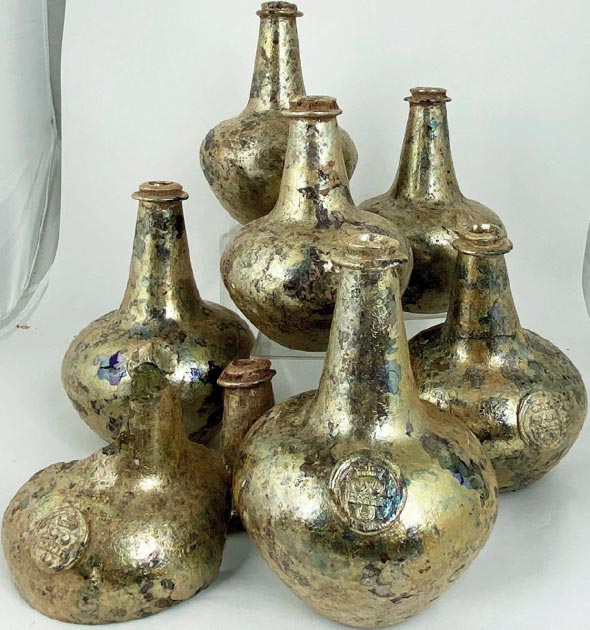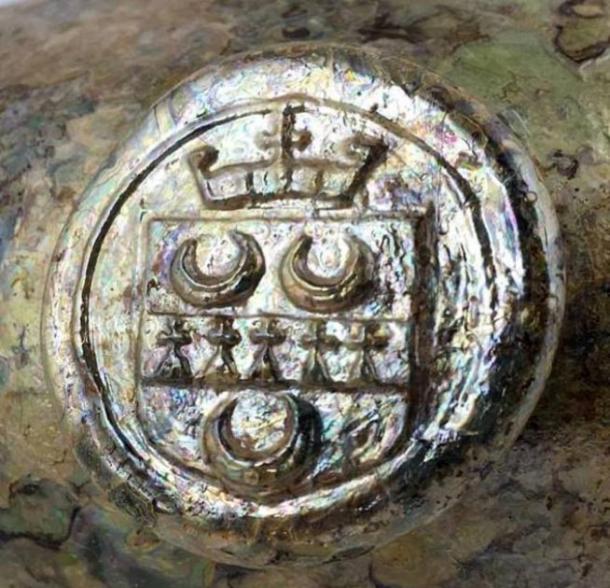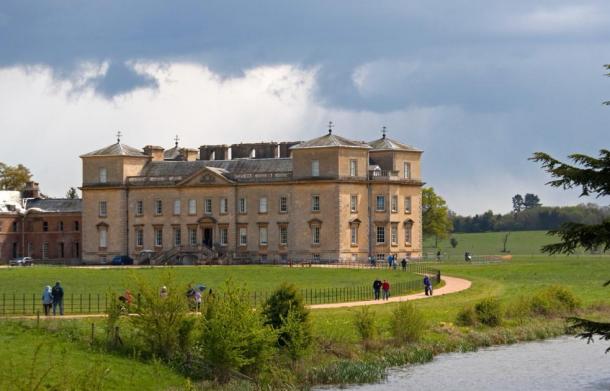Rare 17th Century Wine Bottles Worth a Fortune Unearthed in England
After being mistakenly dug up at a building site, a garden of Gold-encrusted 17th-century wine bottles will be auctioned at £ 20000 for the leading price.
Seven ‘ extremely rare ‘ curved bottles of black glass have been unearthed from the clay during construction last November and carry the seal of the Earl of Coventry.
In the late 1600s, the Earl lived in Worcestershire on the nearby Croome estate and it is thought they belonged to him.
The eight-inch tall vessels, which are almost completely intact, are thought to date between 1650 and 1670, around the time of the reign of Charles II and the civil war.
A workman in a JCB who was digging at a site near Kinnersley, Worcestershire, spotted the bottles glistening in the sun during routine excavations. They will be sold off by BBR Auctions of Elsecar, South Yorkshire, next month.

‘Wine bottles which date from 1650 to 1670 are extremely rare and for these to be discovered with their seals so they can be attributed to the Earls of Coventry is very special,’ said Alan Blakeman, the auctioneer at BBR Auctions.
‘Back then, you had to be filthy rich to have your own wine bottles made, with the seals providing an extra status symbol.


‘The workman was digging a trench for footings with a JCB when he found them and it is remarkable that they have survived in such good condition.’
It’s thought the bottles were made for George Villiers – the second Duke of Buckingham and the second Earl of Coventry (1628-1687). Villiers owned three glassworks houses and was interested in glassmaking.
He was granted an exclusive patent in 1663 for plate and mirror glass at Vauxhall glassworks in the area now called Glasshouse Walk in London, according to Antiques Trade Gazette.
The Earl of Coventry was created for the Villiers’ father of the same name, the first Earl of Coventry, who was also a favorite – and possibly lover – of King James I.
The bottles are valued at £20,000 and will be sold over the course of three auctions, with the first sale taking place on February 2. The National Trust-owned mansion Croome Court was the seat of the Coventry family from the late 16th century.
The building in its current form was started in 1751 for the 6th Earl of Coventry.






